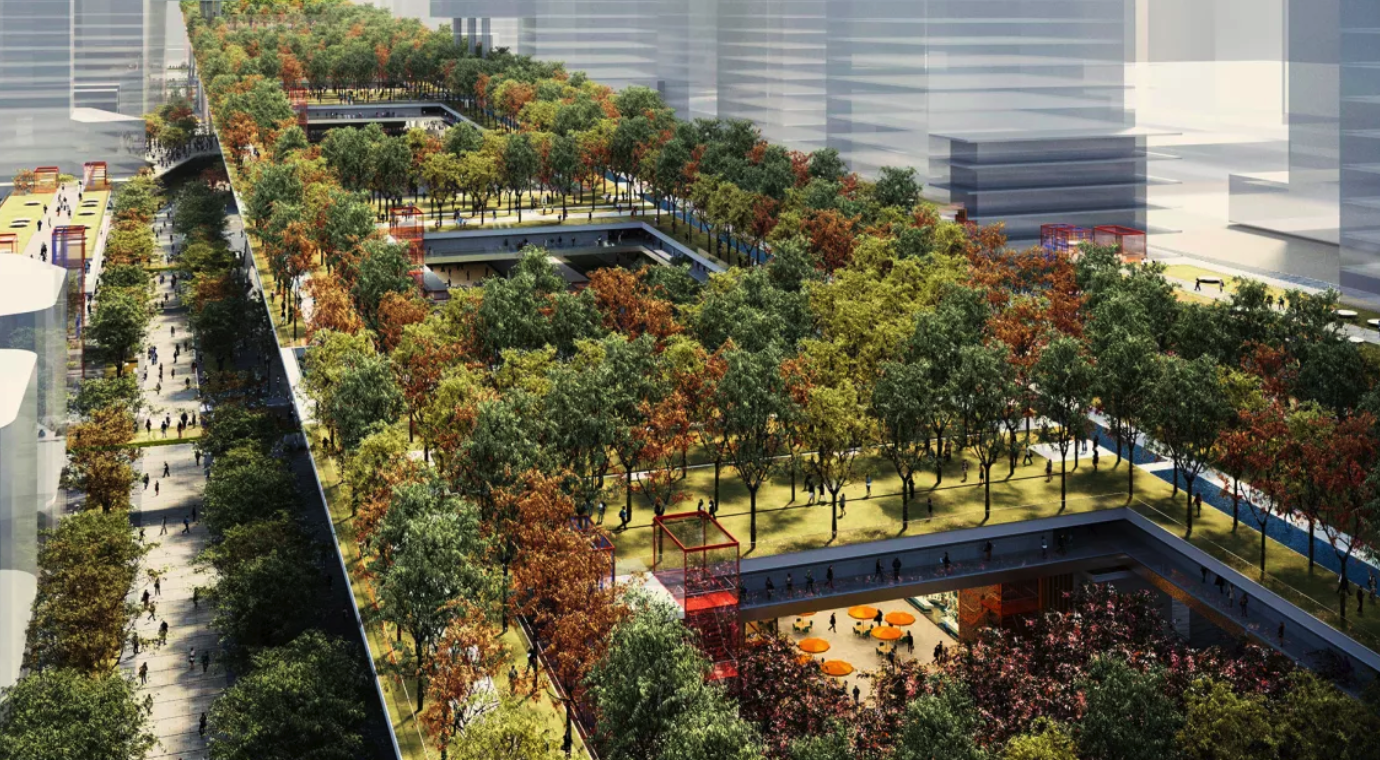Shenzhen’s new ‘urban living room’

When it’s completed in 2020, Qianhai will be a district of shimmering skyscrapers designed to function as a new business-focused district within Shenzhen–the city largely responsible for manufacturing the world’s smartphones and other electronics. The new neighborhood is being built from the ground up with almost 280 million square feet of business development space meant to serve as the entrepreneurial bridge between Hong Kong and Shenzhen.
But the company behind the development, Shenzhen Qianhai Development and Investment Holding Co., is trying to protect at least some green space for its denizens, so it tapped Rogers Stirk Harbour + Partners to design an elevated sky garden that runs nearly a mile through the district’s buildings.
The project sits on a subtle gradient, moving pedestrians from the ground level to a skyscraper (also developed by the firm) in the city center.
The idea is that the sky garden will serve as the top layer of the city’s transportation infrastructure. Below ground, commuters can take trains. On the street level, they can walk or drive.
But up above they’ll find a casually paced public space, to be filled with regular events and best experienced at a slower gait.
Elevated gardens are all the rage in cities across the world. But unlike projects like the High Line, Qianhai’s sky garden is built from scratch, rather than serving as an adaptive reuse project upon old infrastructure.
It has a downright formalist feel–a strong, geometric profile that connects the harbor and the architecture directly–rather than flowing organically through the city. According to lead architect Stephen Spence, that was precisely the point.
“Given the diversity of the buildings emerging within the Qianhai area, our preference was for a simple, bold, and confident insertion into the existing master plan,” says Spence.
“The formality derives from the existing road grid and building plots, combined with our desire to maximize the area of raised green park linking the city to the bay. It creates a new horizon against which people can orientate.”
Source: Mark Wilson, Fast Company




